Disclosure: This article contains affiliate links. We may earn a commission from purchases at no extra cost to you, which helps our travel content.
There's something almost cinematically perfect about Budapest after the sun goes down. The city transforms—historic buildings illuminate against the night sky, the Danube reflects a thousand lights, and beneath it all pulses a nightlife scene that defies simple categorization. During a recent business trip to meet with potential creative partners in Central Europe, I extended my stay for a weekend to explore this nocturnal landscape. What I discovered was a city where history and hedonism coexist in perfect harmony, where Habsburg-era thermal baths become dance floors and abandoned Soviet-era factories transform into cultural hubs. Budapest doesn't just have nightlife—it has reinvented the very concept, creating spaces where the weight of history becomes the foundation for something entirely contemporary.
The Phenomenon of Ruin Bars: Where Decay Becomes Decadence
My fascination with Budapest's nightlife began, as it does for many visitors, in the Jewish Quarter's labyrinthine ruin bars. These venues—abandoned buildings and derelict spaces transformed into eclectic drinking establishments—represent the city's resilient creative spirit.
Szimpla Kert, the original and most famous ruin bar, was my first stop. Pushing through its unassuming entrance, I found myself in what felt like a fever dream designed by a collective of mad artists: mismatched furniture, walls adorned with Soviet-era relics, bathtubs repurposed as seating, and a Trabant car transformed into a table. The space defies conventional design logic yet somehow achieves a perfect harmony in its chaos.
What makes these venues so compelling isn't just their visual appeal—it's how they embody Budapest's approach to history. Rather than demolishing the old to build something shiny and new, the city has embraced its scars and reimagined them. Each ruin bar tells a story of cultural preservation through transformation.
Beyond Szimpla, I discovered Anker't, a more minimalist concrete courtyard space that hosts everything from film screenings to techno nights, and Instant-Fogas Complex, an entire building complex that houses 18 bars, several dance floors, and a bewildering array of themed rooms. Navigating these spaces requires comfortable footwear—my lightweight sneakers proved essential for hours of exploration across uneven floors and hidden staircases.
What struck me most was how these spaces attract a genuinely diverse crowd: locals and tourists, students and business travelers, all converging in these temples to creative reuse. The drinks remain surprisingly affordable (expect to pay 800-1500 HUF/$2.50-$5 for craft beers), making it easy to bar-hop throughout the evening.
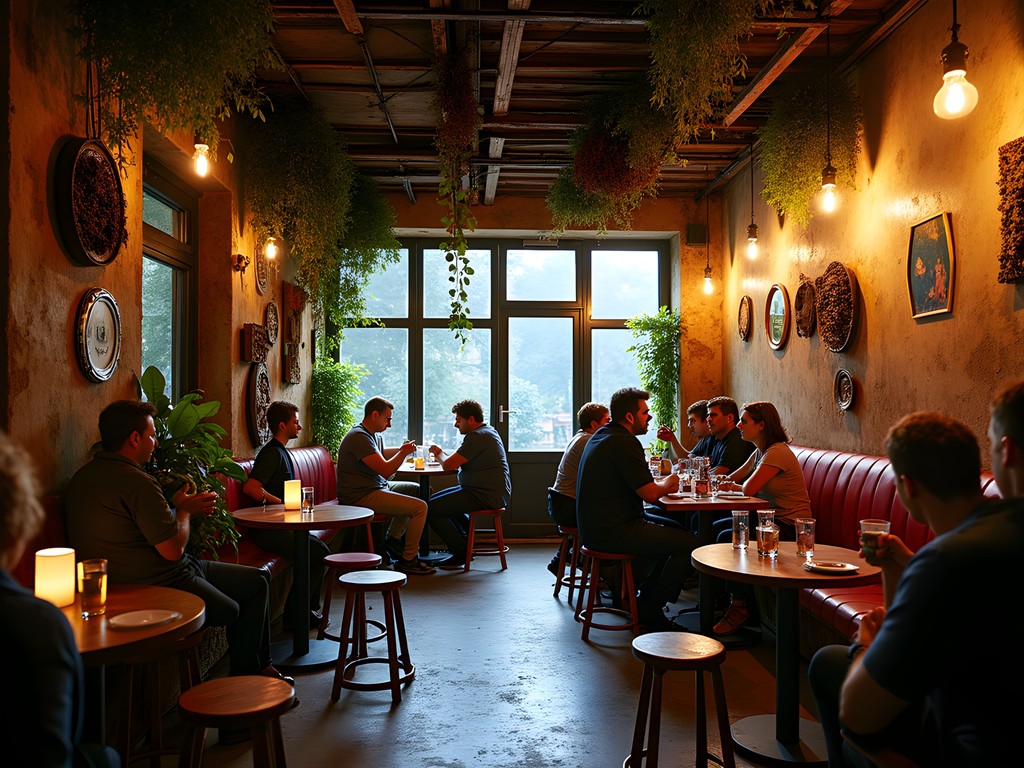
💡 Pro Tips
- Arrive at Szimpla Kert before 10 pm to avoid long queues, especially on weekends
- Look beyond the main courtyard in ruin bars—the most interesting spaces are often hidden in back rooms and upper floors
- Ruin bars accept credit cards, but keeping some local currency (forints) on hand is useful for smaller establishments in the area
Sparty Culture: When Thermal Baths Transform into Dance Floors
Budapest's thermal bath culture dates back to Roman times, but leave it to this city to reimagine even this ancient tradition. On Saturday night, I witnessed the transformation of the historic Széchenyi Baths into what locals call a 'sparty'—a surreal convergence of wellness tradition and contemporary nightlife.
Arriving around 10:30 PM, I found the neo-Baroque bathhouse complex illuminated by pulsating lights, with DJs positioned alongside the steaming thermal pools. Hundreds of revelers in swimwear danced in and around the water, creating an atmosphere that felt both decadent and strangely wholesome—a celebration of the body that connects to Budapest's centuries-old bathing culture.
The experience requires some preparation. I brought a quick-dry travel towel that proved invaluable, along with a waterproof pouch for my phone. The sparty organizers offer lockers, but bringing minimal valuables is advisable.
What makes these events particularly special is the setting—dancing beneath the stars in steaming thermal waters, surrounded by ornate architecture that dates back to 1913. It's this juxtaposition of historical grandeur and contemporary hedonism that defines Budapest's most memorable nightlife experiences.
Advance booking is essential, as these events frequently sell out. Tickets aren't cheap by Budapest standards (around €45-60), but the experience is genuinely unique. For those seeking something less intense but equally atmospheric, many thermal baths also offer evening sessions with subdued lighting and music that create a more relaxed nighttime experience.
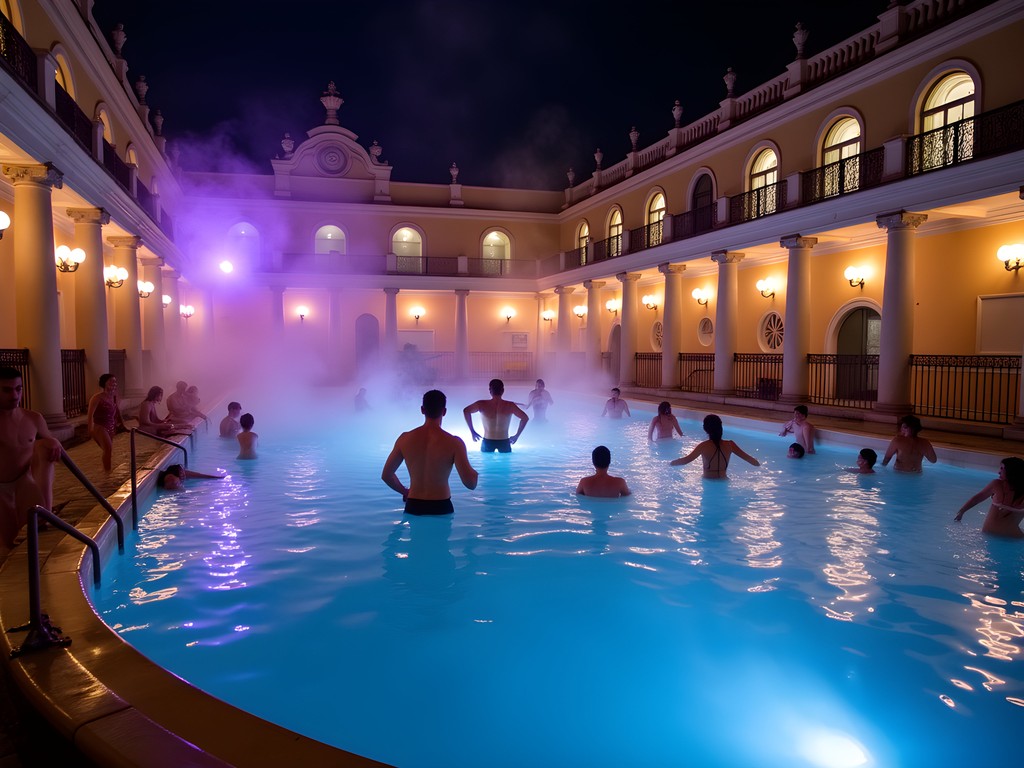
💡 Pro Tips
- Book sparty tickets at least two weeks in advance during high season (June-September)
- Bring flip-flops, as the floors can be slippery and sometimes uncomfortably hot
- Consider splurging on a cabin rather than a locker for more privacy when changing
Twilight on the Danube: River Cruises with a Twist
No exploration of Budapest after dark would be complete without experiencing the city from its defining feature: the Danube River. While daytime cruises abound, the evening options reveal the city's illuminated splendor from a unique vantage point.
I opted for a local experience rather than the large tourist boats, booking a spot on a smaller vessel that included a wine tasting featuring Hungarian varietals. As we glided past the illuminated Parliament Building—its Gothic Revival details dramatically highlighted against the night sky—I sipped Furmint from the Tokaj region while our sommelier explained how volcanic soils influence its mineral character.
What made this experience special wasn't just the postcard-perfect views of Buda Castle and the Chain Bridge, but the intimate format that allowed for genuine conversation with locals and fellow travelers. Our guide shared folklore about the river, including the legend of the mermaid Duna, the river's namesake, who allegedly still appears to drowning sailors.
For those seeking something more lively, several party boats ply these same waters, offering open-air dance floors and bars. I glimpsed these passing vessels, their music and laughter carrying across the water, creating a festive soundtrack to the city's evening rhythm.
Capturing these illuminated scenes requires some photographic preparation. My compact tripod proved invaluable for stabilizing night shots from the boat's railing, allowing me to capture long exposures of the city lights reflecting on the water without the blur that typically plagues nighttime photography.
Prices for evening cruises vary dramatically based on the experience—from budget-friendly sightseeing options (around €20) to premium wine tastings or dinner cruises (€50-80). For the best value, look for smaller vessels that limit passenger numbers and include quality Hungarian wine or pálinka tastings in their offering.

💡 Pro Tips
- Book smaller vessels (under 30 passengers) for a more intimate experience and better service
- The 'Blue Hour' just after sunset offers the most magical lighting for photographs of the illuminated buildings
- Layer up with a light jacket even in summer, as evening river breezes can be surprisingly cool
Underground Music Scene: Beyond Tourist Circuits
While Budapest's mainstream nightlife offers plenty to explore, my professional connections led me to discover venues that rarely appear in guidebooks but represent the authentic pulse of the city's creative community.
Akvárium Klub, located beneath Erzsébet Square, hosts everything from established international acts to emerging local talent. During my visit, I caught a performance by a Hungarian neo-folk group that blended traditional instruments with electronic elements, creating a sound that felt both ancient and futuristic. The crowd—predominantly local creative professionals—welcomed me warmly when they discovered my interest in how folklore influences contemporary creative expression.
For electronic music enthusiasts, Lärm represents Budapest's answer to Berlin's techno scene. Hidden above an already hidden ruin bar (Fogasház), this minimalist black box focuses exclusively on the music—no photos allowed, no distractions, just immersive sound and a crowd of dedicated enthusiasts. The door policy is relaxed compared to similar venues in Western Europe, but respect for the music and space is expected.
A24 is another local favorite—an intimate jazz bar where I spent hours nursing perfectly crafted Old Fashioned cocktails (the bartender used a smoking technique I'd never seen before) while listening to a local quartet perform standards and original compositions. The venue exemplifies Budapest's talent for creating spaces that feel simultaneously cosmopolitan and distinctly Hungarian.
What makes Budapest's underground scene particularly accessible is its affordability. Cover charges rarely exceed 3000 HUF (about €8), and even craft cocktails in these venues cost significantly less than their equivalents in London or New York. This economic reality has fostered a vibrant creative community where experimentation flourishes without the commercial pressures found in more expensive capitals.
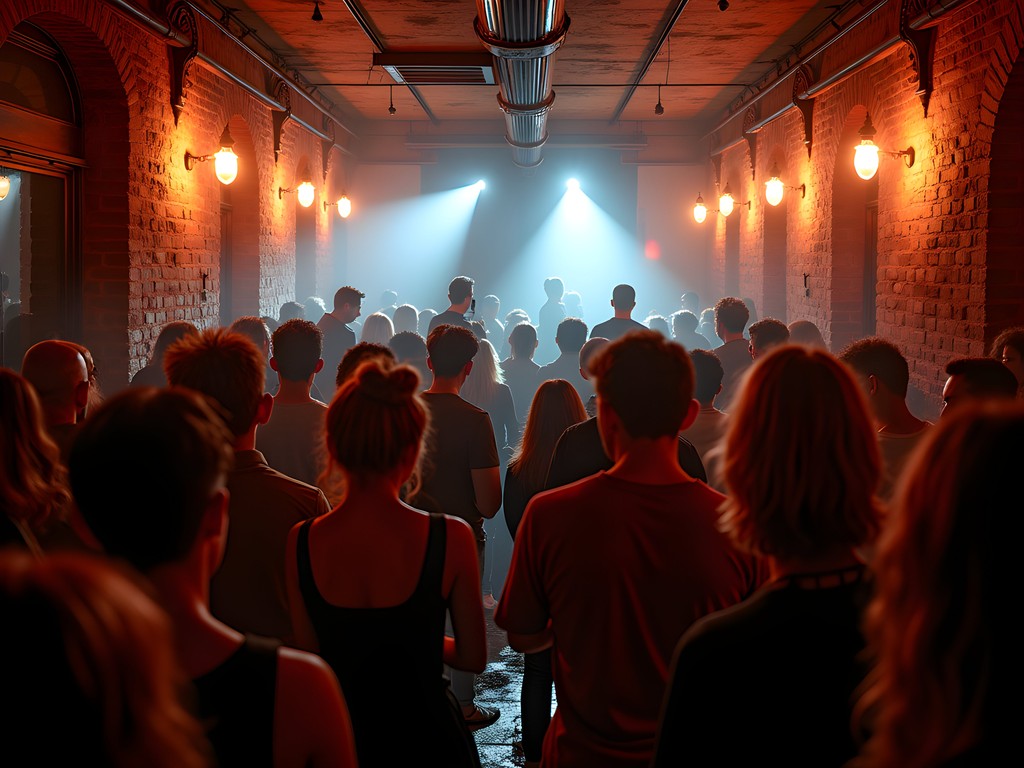
💡 Pro Tips
- Follow Budapest-based music collectives like Farbwechsel or Technokunst on social media for up-to-date event information
- Arrive before midnight at underground venues to avoid potential capacity issues, especially on weekends
- Learn the phrase 'Egy sört kérek' (I'd like a beer) as a simple but appreciated gesture in less touristy venues
Late-Night Culinary Adventures: Beyond Lángos and Goulash
Budapest's reputation for heavy, meat-centric cuisine is being reimagined by a new generation of chefs and food entrepreneurs who understand that nightlife requires proper sustenance. My exploration of the city's after-hours food scene revealed options that go far beyond the stereotypical late-night kebab.
Street Food Karavan, located near the Jewish Quarter's main ruin bars, stays open until 1 AM on weekends. This collection of food trucks offers everything from traditional Hungarian lángos (fried dough topped with sour cream and cheese) to innovative fusion creations. I became slightly obsessed with a local vendor selling langalló—a Hungarian flatbread topped with crème fraîche, bacon, and caramelized onions—the perfect absorbent base for a night of exploration.
For a more refined late-night experience, Kiosk offers kitchen service until midnight and drinks much later. Housed in a stunning Bauhaus building overlooking the Danube, it attracts a sophisticated crowd of locals and visitors. Their midnight menu includes smaller portions of Hungarian classics reimagined with contemporary techniques—the duck liver pâté with tokaji wine jelly became my preferred midnight indulgence.
Perhaps most surprising was discovering Ramenka, serving authentic Japanese ramen until 2 AM on weekends. After a chilly evening cruise on the Danube, nothing restored me like their spicy miso ramen, packed with umami and perfectly chewy noodles. The restaurant has become a favorite among Budapest's hospitality workers, who gather here after their shifts end.
To navigate this late-night culinary landscape efficiently, I relied heavily on my smartphone power bank, which kept my device charged through hours of map navigation and food photography. Budapest's sprawling layout means that finding these gems requires digital assistance, particularly as you venture beyond the central districts.
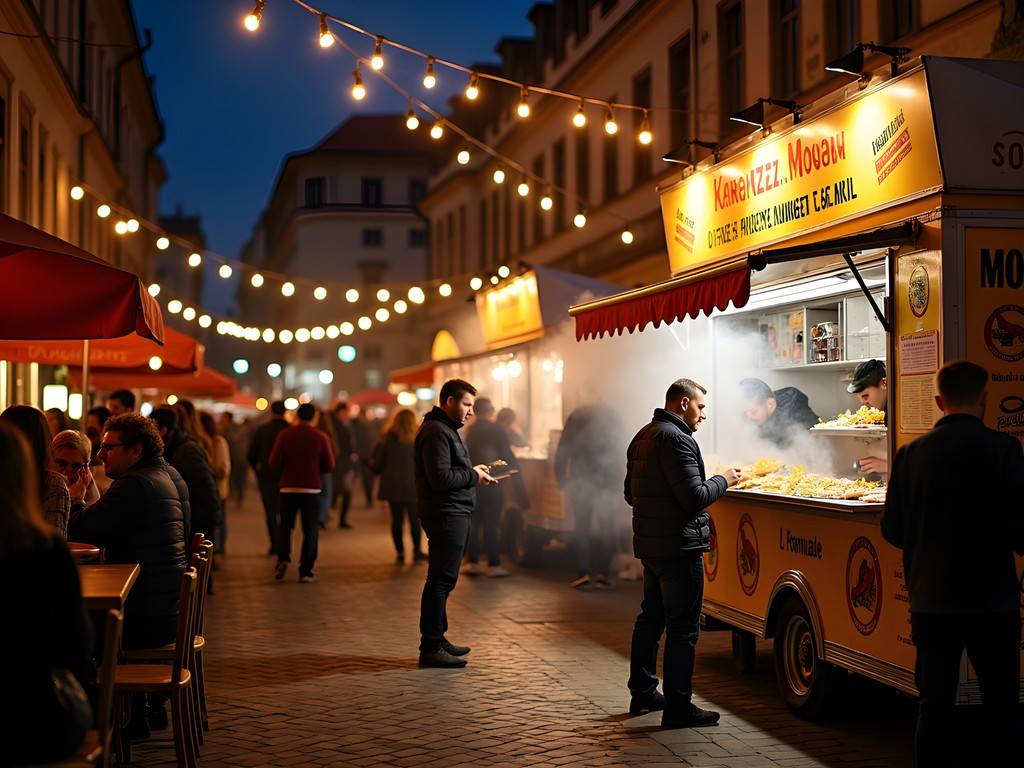
💡 Pro Tips
- Most kitchen service ends earlier than the venues close—check specific food service hours when making late dinner plans
- Street Food Karavan becomes extremely busy after midnight on weekends; go slightly earlier to avoid the post-bar rush
- Save room for chimney cake (kürtőskalács) from street vendors who often operate until the early morning hours near popular nightlife areas
Final Thoughts
Budapest after dark defies easy categorization—it's a city where the weight of history creates the foundation for innovation rather than holding it back. From thermal baths reimagined as dance floors to abandoned buildings transformed into cultural hubs, the city demonstrates how preservation and progress can coexist beautifully. As a creative professional, I found endless inspiration in this approach to urban spaces and cultural evolution.
What makes Budapest's nightlife truly special isn't just its diversity or affordability (though both are remarkable), but how it embraces contradictions: historic yet contemporary, sophisticated yet raw, familiar yet constantly surprising. Whether you're extending a business trip like I was or planning a dedicated nightlife weekend with friends, Budapest rewards those willing to venture beyond the obvious and stay up well past bedtime. The city doesn't just have a nightlife scene—it has a nocturnal soul waiting to be discovered.
✨ Key Takeaways
- Budapest's ruin bars represent creative adaptive reuse at its finest—visit several to appreciate their diverse approaches
- Thermal bath parties ('sparties') offer a uniquely Hungarian nightlife experience that connects to centuries-old traditions
- River cruises provide the most photogenic views of the city's illuminated landmarks
- The underground music scene offers high-quality experiences at a fraction of Western European prices
📋 Practical Information
Best Time to Visit
June through September for outdoor ruin bars and river cruises; year-round for thermal bath parties
Budget Estimate
$50-100 per night for food, drinks, and activities
Recommended Duration
Minimum 2-3 nights to experience diverse nightlife options
Difficulty Level
Easy

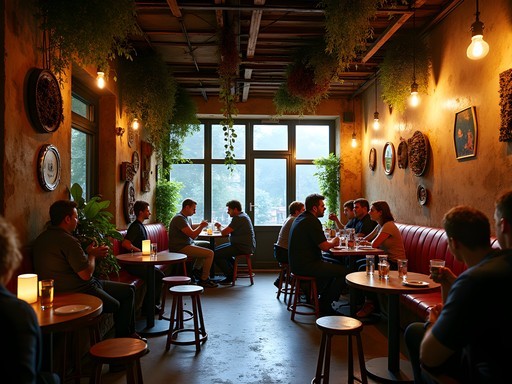
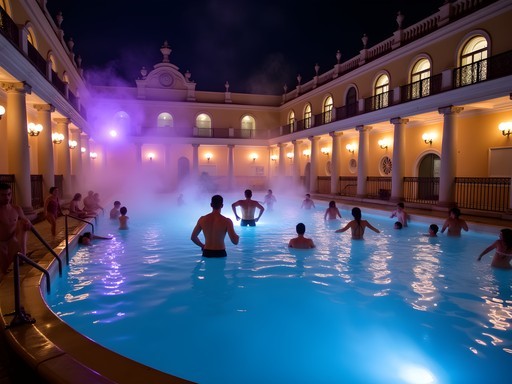
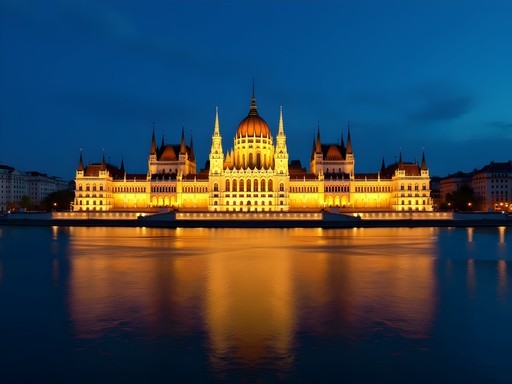
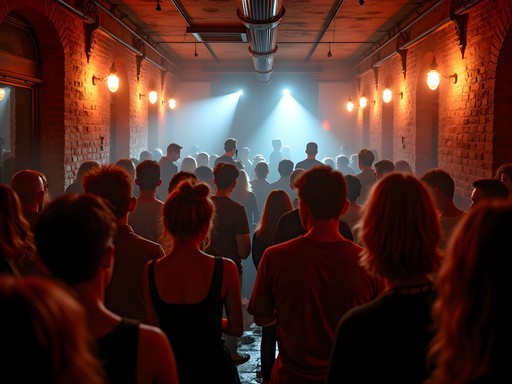
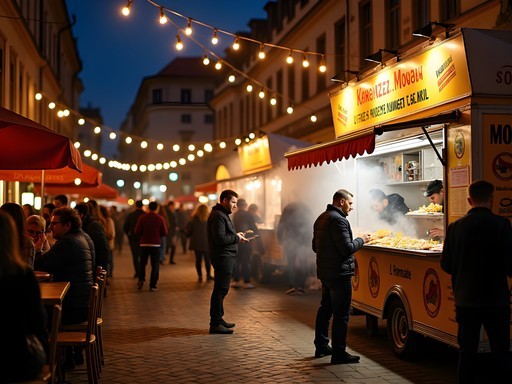





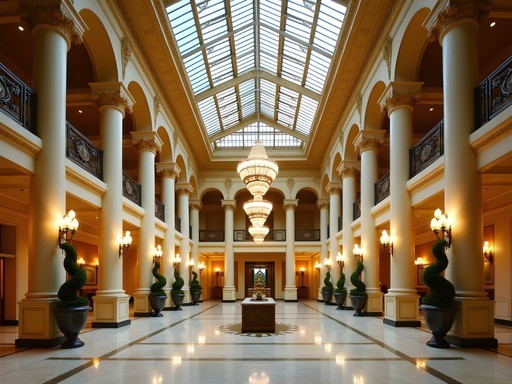
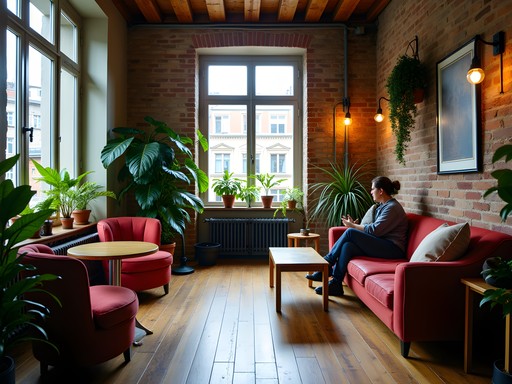
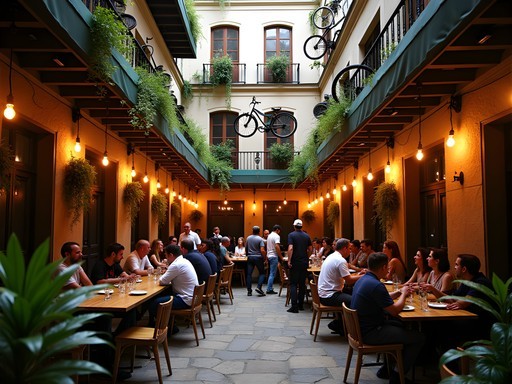

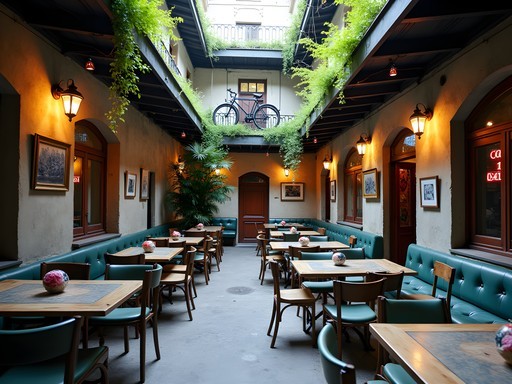
Comments
citygal
Love this! If you only had one night in Budapest, which ruin bar would you recommend? And is it worth booking a river cruise in advance or can you just show up?
luckydiver
Not Helen but I'd say Szimpla Kert is THE one to see if you only have one night. It's the original and most iconic. Gets super busy though!
Helen Stephens
I agree with @luckydiver - Szimpla Kert is the classic choice! As for cruises, definitely book ahead in peak season (May-Sept). In shoulder season you can often book same-day, but the popular sunset/dinner cruises sell out quickly year-round. The basic sightseeing cruises are easier to get last-minute.
explorequeen7116
How safe is Budapest at night for solo female travelers? I'm planning my first European trip and this post has me wanting to experience the nightlife!
Helen Stephens
Budapest is generally quite safe for solo female travelers. The tourist areas and main nightlife districts have plenty of people around, even late. Just take the usual precautions - stay aware of your surroundings, don't leave drinks unattended, and use official taxis or Bolt (similar to Uber). I walked around many evenings alone while researching and felt comfortable.
explorequeen7116
That's reassuring, thanks! I've downloaded personal safety app for my trip just to be extra safe. Can't wait to check out those ruin bars!
luckydiver
Just got back from Budapest and the ruin bars blew my mind! Szimpla Kert was insane - each room like stepping into a different world. Had the best night at Instant too, though it's more clubby. The thermal bath party was WILD but so much fun!
explorequeen7116
Was it easy to meet other travelers at the ruin bars? Going solo next month and a bit nervous!
luckydiver
Super easy! Everyone's friendly and there are tons of solo travelers. I met a whole group at Szimpla on my first night. Also check out the pub crawls - instant friends!
Ana Robinson
This brings back so many memories! We visited Budapest last spring with our kids (teens) and surprisingly, it was perfect for family travel. We did a twilight cruise where they were absolutely mesmerized by the parliament building all lit up. We skipped the Sparty scene obviously, but Szimpla Kert during daytime hours was family-friendly and my teenagers thought it was the coolest place ever. The mix of art, weird decorations, and history gave us so much to talk about. If you're traveling with teens, Budapest strikes that perfect balance of culture and 'cool factor' that's hard to find!
summerseeker
Great post! I'm heading to Budapest in December. Are the ruin bars still lively in winter? Also wondering if the river cruises run year-round?
Helen Stephens
Thanks! Yes, ruin bars are actually extra cozy in winter - many have indoor sections with heaters. The river cruises do run year-round, and the winter views with all the lights are magical! Just dress warm for the open deck areas.
summerseeker
Perfect! Can't wait to experience it all bundled up with some mulled wine!
summerpro
Just got back from Budapest and your guide was spot on! The night cruise was MAGICAL - seeing the Parliament building all lit up was worth the entire trip. We ended up at Szimpla three different nights because it was so cool. Each room has completely different vibes! The underground music scene tip led us to Akvárium Klub where we caught an amazing local DJ. Thanks for this post!
wildlife
How was getting around at night? Did you use public transit or taxis?
summerpro
We used the night buses mostly - they run frequently and felt totally safe. For the late nights at ruin bars, we used Bolt (like Uber) to get back to our hotel. Super cheap compared to other European cities!
Gregory Boyd
Great post Helen! Having spent a month in Budapest last year, I'd add that the timing of your visit to ruin bars makes a huge difference. Early evenings (7-9pm) give you the chance to actually appreciate the incredible design and art installations before they get packed. Instant is another fantastic complex worth checking out - less touristy than Szimpla but equally fascinating. For the river cruises, I'd recommend bringing a proper camera if you're into photography. I regretted only having my phone when we passed Parliament all lit up at night - the dynamic range needed is challenging for most phones. I used my travel tripod on the upper deck and got some incredible long-exposure shots.
summerpro
Instant was my favorite too! Much more local vibe. Did you check out any of the thermal bath parties? Thinking about trying one but not sure if they're too crowded.
Gregory Boyd
The Sparty at Széchenyi was definitely an experience! Very crowded but in a fun way. Just book tickets online in advance - they sell out quickly on summer weekends.
wildlife
Those ruin bars sound amazing! Are they safe for solo female travelers? Planning my first trip to Budapest this fall.
Gregory Boyd
I've been to Budapest three times as a solo traveler (though male), and the ruin bars are generally very safe. Szimpla Kert is always packed with tourists and has a really open vibe. Just use normal city precautions - watch your drink, don't get too intoxicated alone, and have a plan for getting back to your accommodation. The city has excellent night transportation.
wildlife
Thanks Gregory! That's really reassuring. Any specific ruin bars you'd recommend beyond Szimpla?
Fatima Sims
Helen's post brought back so many memories! Budapest's nightlife has this perfect blend of gritty authenticity and unexpected elegance. During my adventure there last winter, I discovered that the city has an entirely different energy when it's cold - the thermal baths become even more magical with steam rising into the freezing air. I skipped the Sparty scene (not my vibe) but found this incredible rooftop bar called High Note SkyBar with panoramic views of St. Stephen's Basilica all lit up at night. For anyone visiting in winter, don't miss the Christmas markets along the Danube - mulled wine and twinkling lights make for the perfect evening stroll before hitting the ruin bars. Budapest taught me that sometimes the most memorable travel experiences happen after sunset!
escapeace
Been to Budapest four times now and still discovering new places! If you want to escape the tourist crowds, check out Pontoon near the Chain Bridge - it's an outdoor venue right on the Danube with amazing sunset views and more locals than tourists. Also, the Jewish Quarter has some hidden cocktail bars worth finding - try Warmup Bar for amazing craft cocktails or Yellow Zebra for a more laid-back vibe. The ruin bars are iconic but there's so much more to Budapest's night scene!
greenadventurer
Thanks for the recommendations! Adding these to my list for next month!
Venture X
Premium card with 2X miles, $300 travel credit, Priority Pass